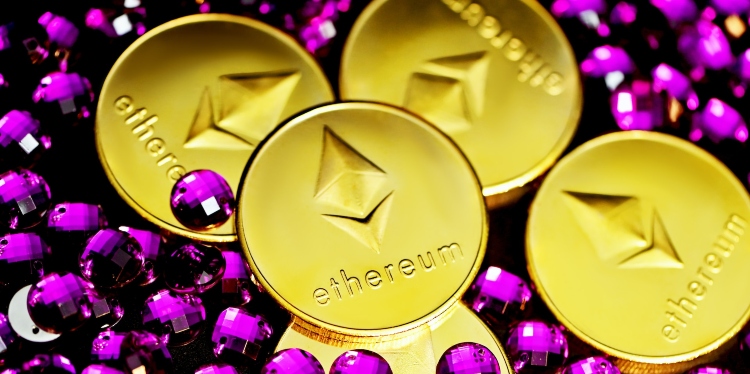Blockchain technology has witnessed an unprecedented surge in popularity over the last decade, with Ethereum emerging as a frontrunner. However, amidst the excitement surrounding Ethereum, misconceptions often blur the true picture of this groundbreaking platform. This article aims to dispel these illusions and offer a comprehensive understanding of Ethereum’s multifaceted nature. Visit ethereum-proair.com for anyone keen to learn about investing.
The Rise of Ethereum
Ethereum, conceived by Vitalik Buterin in 2013, introduced a novel approach to blockchain technology by enabling the creation of decentralized applications (DApps) through smart contracts. It has since evolved into a thriving ecosystem with global significance.
The Prevalence of Misconceptions
Misconceptions about Ethereum persist due to its complex nature and rapid development. These misconceptions hinder informed decision-making, leading to misguided investments and skepticism.
Purpose and Scope of the Article
This article endeavors to delve into Ethereum’s core technology, dispel common misconceptions, and explore its genuine potential. By doing so, readers will gain a clearer understanding of Ethereum’s true value beyond the hype.
Ethereum: Beyond the Hype
To truly appreciate Ethereum, it’s crucial to grasp its foundational components and broader ecosystem.
Understanding Ethereum’s Core Technology
Smart Contracts
Smart contracts are self-executing agreements with predefined rules. They automate processes and eliminate the need for intermediaries, revolutionizing industries like finance, supply chain, and more.
Decentralized Applications (DApps)
DApps leverage smart contracts to create decentralized, tamper-proof applications. They offer transparency, security, and censorship resistance.
The Role of Ether (ETH) in the Ethereum Ecosystem
Ether (ETH) is Ethereum’s native cryptocurrency, serving multiple purposes:
- Gas Fees: ETH is used to pay for transaction fees, making it an essential part of the Ethereum network.
- Staking: ETH holders can participate in network security by staking their tokens in Ethereum 2.0.
- Governance: ETH holders have a say in protocol upgrades and decisions through decentralized governance mechanisms.
Ethereum’s Influence on the Blockchain Landscape
Ethereum’s innovations, such as smart contracts and DApps, have catalyzed the growth of the blockchain industry. It has inspired numerous blockchain projects and led to the emergence of a vibrant developer community.
Myth #1: Ethereum is Just a Cryptocurrency
One of the most common misconceptions about Ethereum is that it’s merely a digital currency.
Debunking the Misconception
Ethereum’s primary function is not as a currency but as a decentralized platform for building applications. While ETH has value, Ethereum’s real power lies in its ability to execute smart contracts.
Ethereum’s Multi-faceted Functionality
Ethereum’s uses extend far beyond a traditional cryptocurrency. It powers decentralized finance (DeFi), non-fungible tokens (NFTs), gaming, identity verification, and more.
Real-world Use Cases Beyond Digital Currency
- DeFi: Ethereum’s DeFi ecosystem enables lending, borrowing, and trading of digital assets without intermediaries.
- NFTs: The explosion of NFTs on Ethereum has revolutionized the art, gaming, and entertainment industries.
- Supply Chain: Ethereum’s transparency and immutability make it ideal for tracking and verifying supply chain data.
Myth #2: Ethereum is Slow and Inefficient
Ethereum’s scalability challenges have fueled the misconception that it’s slow and inefficient.
Unpacking Ethereum’s Scalability Challenges
Ethereum’s popularity has exposed scalability issues, leading to network congestion and high gas fees.
Ethereum 2.0 and the Path to Scalability
Ethereum 2.0, an ongoing upgrade, promises to address scalability concerns by transitioning to a proof-of-stake (PoS) consensus mechanism. This will enhance transaction throughput and reduce energy consumption.
Layer 2 Solutions: Enhancing Ethereum’s Speed and Efficiency
Layer 2 solutions like Optimistic Rollups and zk-Rollups provide scalability while maintaining Ethereum’s security. These solutions offer near-instant transactions with significantly lower fees.
Myth #3: Ethereum is Not Secure
Security concerns are widespread, but Ethereum boasts robust security mechanisms.
The Misunderstanding of Security on Ethereum
Security incidents, like the infamous DAO hack, have fueled doubts about Ethereum’s security.
Ethereum’s Robust Security Mechanisms
- Immutability: Once a transaction is on the Ethereum blockchain, it is virtually irreversible.
- Decentralization: Ethereum’s distributed network makes it resistant to single points of failure.
- Constant Upgrades: Ethereum continually improves security through upgrades and bug bounties.
High-Profile Attacks and Ethereum’s Responses
Ethereum has learned from past attacks, enhancing its security protocols and actively mitigating vulnerabilities.
Myth #4: Ethereum is Just for Developers
Ethereum is often perceived as a platform exclusively for developers, but it’s accessible to everyone.
Ethereum’s Accessibility for Non-developers
User-friendly wallets and interfaces have made it easy for non-technical users to interact with Ethereum.
User-friendly Interfaces and Wallets
Wallets like MetaMask and user-friendly platforms like Uniswap have simplified Ethereum interactions for the masses.
Opportunities for Non-Technical Participation
Ethereum’s DeFi protocols offer opportunities for users to earn passive income through yield farming, liquidity provision, and governance participation.
Myth #5: Ethereum is Only for Speculation
Ethereum’s investment appeal is undeniable, but its utility goes beyond speculative trading.
Ethereum’s Investment Appeal
Ether’s scarcity and utility have made it a popular investment choice.
The Diversified Utility of Ether (ETH)
ETH is not just a store of value; it is actively used within the Ethereum ecosystem to facilitate transactions, stake for network security, and participate in governance.
Long-term Viability and Utility of Ethereum
Ethereum’s continually evolving ecosystem, driven by innovative DApps and DeFi projects, highlights its long-term viability.
Conclusion
Throughout its development, Ethereum has undergone a remarkable journey characterized by continuous innovation, the need to overcome challenges, and steady growth. To fully comprehend and engage with this groundbreaking platform, it is crucial to dispel any misconceptions associated with it. Ethereum itself transcends the label of being solely a cryptocurrency; it serves as a driving force for the decentralized future, presenting a multitude of opportunities for both developers and users alike.
David Prior
David Prior is the editor of Today News, responsible for the overall editorial strategy. He is an NCTJ-qualified journalist with over 20 years’ experience, and is also editor of the award-winning hyperlocal news title Altrincham Today. His LinkedIn profile is here.














































































